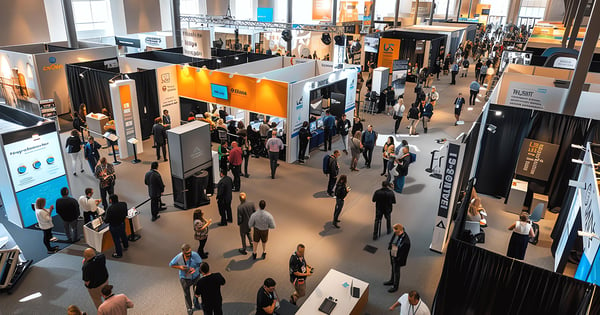Awaab's Law: Your guide to compliance, responsibility and safer homes
What housing providers need to know before October 2025
On 5 June, Bellrock hosted an essential webinar to guide social housing providers and local authorities through the key requirements of Awaab's Law: legislation set to reshape how we address damp, mould and health risks in housing. Led by indoor environmental quality expert Francesca Brady (Frankie), the session offered both clarity and confidence for those responsible for making homes safer.
If you weren't able to attend or want a concise recap here's what you need to know.
Why Awaab's Law matters
At the heart of the law is a tragedy that should never have happened. In 2020, two-year-old Awaab Ishak died from prolonged exposure to black mould in his Rochdale home. His parents had raised concerns multiple times, but no action was taken. A coroner later confirmed that his death was directly linked to chronic damp conditions caused by inadequate ventilation.
Public outcry followed and rightly so. Awaab's Law is the government's response: a legislative framework that puts health and accountability front and centre for housing providers.
What's changing and when
The legislation takes effect in October 2025 and while its phased implementation will continue through 2026 and 2027, the immediate focus is clear: addressing damp and mould hazards in social housing.
October 2025:
-
Mandatory response times for identifying and rectifying damp and mould
-
Increased enforcement powers for regulators
-
Proactive duties to prevent issues before complaints arise
Future phases will expand into additional risks, including fire safety, extreme temperatures and structural concerns.
The key provisions you need to know
Awaab's Law introduces firm, time-bound responsibilities. The expected standards include:
-
Investigation within 14 days of a complaint.
-
Written findings within 48 hours of inspection.
-
Remedial works to begin within 7 days.
-
Emergency action within 24 hours if health risks are immediate.
Landlords must also maintain clear records, proactively identify risks and educate tenants on safe use of their homes. Failure to comply could lead to fines (up to £30,000), court action and lasting reputational damage.
The five-step compliance plan
To help you prepare, Frankie outlined a straightforward five-step plan to get your housing stock and systems ready:
-
Review your stock
Start by identifying high-risk properties especially where damp and mould issues have been flagged before. By law, you must schedule annual inspections for these properties going forward.
-
Implement fast response systems
Clear, structured workflows are vital. Prioritise issues, track complaints, and align your response processes with the legal timeframes.
-
Optimise maintenance and prevention
Don't wait for complaints. Routine maintenance like unblocking extractor fans or checking insulation can stop small issues becoming major ones. Data loggers are an emerging best practice, giving you early visibility into temperature, humidity, and CO₂ levels.
-
Train staff and contractors
Ensure your entire team understands the urgency. From call handlers to engineers, everyone must know what to look for and how to act fast. Use photos and logs to document everything.
-
Keep clear records
From inspections to repairs, document every step. You must issue a damp and mould safety certificate confirming homes are hazard-free. Transparent, defensible records are your strongest protection.
Proactive monitoring: Sensors that save lives
A standout message from the session was the value of IoT sensors and data loggers. These inexpensive devices track temperature, humidity and ventilation and alert you to risks before they escalate.
Some councils are already trialling them in high-risk homes. Results show that combining sensor data with human inspection offers a powerful tool for early intervention without needing to flood every room with tech.
Data makes the invisible visible. It allows you to make informed, fair decisions, and can help distinguish between building issues and misuse by occupants especially useful when legal or tenant disputes arise.
What about tenant behaviour?
An important and complex part of compliance is tenant behaviour. What happens if residents block extractor fans or refuse to ventilate properly?
The answer, Frankie emphasised, lies in education, collaboration and documentation. Provide tenants with clear guidance. If problems persist despite education and evidence of landlord action, you're in a stronger legal position. You may also explore subsidising simple solutions like dehumidifiers small upfront costs with major long-term benefits.
And beyond October 2025?
Although Awaab's Law applies to social housing, its ethos is expanding. The government has already announced plans to extend its reach to the private rented sector via the Renters Reform Bill.
And it doesn't stop there. Schools, civic buildings and care settings aren't yet formally covered but the principles apply. Frankie encouraged attendees to think ahead: improve ventilation, carry out IEQ (indoor environmental quality) audits and empower communities to report hazards confidently.
What happens next?
Bellrock will be hosting a follow-up session focusing on practical implementation. It will include real-world case studies, sensor technology examples and input from councils already on the journey. Attendees were unanimous: they want actionable insights and peer collaboration.
In the meantime, Bellrock will share:
-
A recording of this session
-
The presentation slides
-
Templates for safety certificates and complaint logs
-
Curated guidance materials from BESA and other bodies
In summary
Awaab's Law is more than legislation it's a moral and operational shift. It places health, safety, and dignity at the heart of housing. For providers, it's a chance to lead by example, to modernise systems and to work in true partnership with residents.
As Frankie concluded, “It's not just about compliance. It's about responsibility.”
If your organisation needs support whether technical, strategic or operational Bellrock is here to help. From compliance planning to IoT-enabled risk management, we'll walk with you every step of the way.




